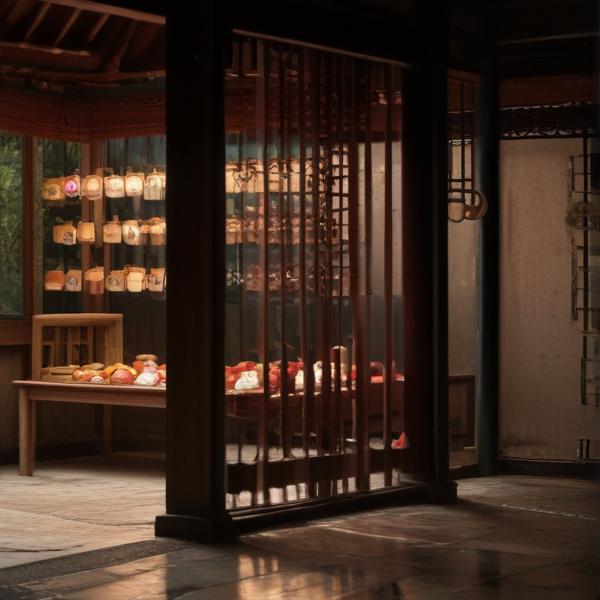基本信息 (Basic Information)
含义与用法 (Meanings & Usage)
中文核心释义 (Core Chinese Meaning): 恭敬、有礼貌,态度谦和庄重。
英文核心释义 (Core English Meaning): respectful, courteous, showing reverence; polite attitude
象形意义 / 为何这么写 (Pictographic Meaning / Writing Rationale)
文言文释义 (Classical Chinese Meaning)
与现代意义相近,主要指恭敬、诚恳、庄重。Similar to modern meaning; mainly denotes respectful, sincere, and solemn behavior.
深入学习 (In-depth Study)
字源故事 (Origin Story)
字形演变 (Character Evolution)
常用词语和例句 (Common Words & Examples)
恭喜 (congratulate; congratulations)
恭喜你通过了考试!
Eng: Congratulations on passing the exam!
恭敬 (respectful; showing respect)
他对长辈非常恭敬。
Eng: He is very respectful to elders.
恭贺 (to congratulate respectfully)
谨向您恭贺新禧。
Eng: I respectfully wish you a Happy New Year.
相关成语 (Related Idioms)
恭敬不如从命
Meaning: Respectful refusal is not as good as obeying (It's better to accept politely than decline courteously)
多语言翻译 (核心释义) (Translations (Core Meaning))
- French: respectueux, poli
- German: respektvoll, höflich
- Spanish: respetuoso, cortés
- Italian: rispettoso, cortese
- Portuguese: respeitoso, cortês
- Russian: почтительный, вежливый
- Arabic: محترم، مهذب
- Persian: مودب، محترمانه
- Dutch: respectvol, beleefd
- Polish: pełen szacunku, grzeczny
- Vietnamese: kính trọng, lễ phép
- Ukrainian: шанобливий, ввічливий
视频学习资源 (Video Learning Resources)
通过以下链接在热门视频网站搜索 "恭" 的更多讲解:
Search for more explanations of "恭" on popular video sites:
- 在 Bilibili.com 搜索 "恭 字源 说文解字" (Search on Bilibili)
- 在 YouTube.com 搜索 "恭 character origin etymology" (Search on YouTube)
网络参考 (Web References for "恭") ()
网络内容摘要 (Web Content Summary):
“恭”字核心含义与字源:“恭”是一个形声兼会意字,从“心”,表示与内心状态有关;“共”作声旁,表音。“恭”的本义为肃敬、恭敬,体现的是一种内心的尊重与庄重态度。 Core meaning & origin: The character “恭” is a phono-semantic compound, with “心” (heart) suggesting an internal state, and “共” providing the pronunciation. Its original meaning is “respectful” or “reverent”, reflecting an attitude of inner respect and seriousness.
文化背景与演变:“恭”字自战国时期至今,字形均以“心”为意旁,突出恭敬来自内心。古文如《论语》有“与人恭而有礼”,强调待人需有恭敬之心。在书法演变中,从篆书、隶书到楷书,形体变化但本意未变。 Cultural background & evolution: Since the Warring States period, “恭” has featured “心” as its semantic component, highlighting that respectfulness comes from within. Classical texts like the Analects promote being respectful towards others. The written form evolved through various historical scripts, but its meaning remained constant.
-
常用词语:如“恭喜”(congratulate)、“恭敬”(respectful)、“恭候”(respectfully wait)。 Common words: e.g., 恭喜 (gōngxǐ, congratulate), 恭敬 (gōngjìng, respectful), 恭候 (gōnghòu, respectfully wait).
-
成语例子:“毕恭毕敬”(with utmost respect)。 Idiom example: “毕恭毕敬” (bì gōng bì jìng: with utmost respect).
-
易混淆点:“恭”与“共”形近但意义完全不同,“共”意为“together”(一起);二者区分要看是否有“心”旁。 Common confusion: “恭” resembles “共” in writing, but they have very different meanings. “共” means “together”; distinguish them by noting the “心” radical in “恭”.
汉字"恭"的起源、演变过程-汉字字源辞典
《甲骨金文字典》786页 《甲金篆》733页 《说文》218页. 形声字。从心,共声。本义为肃敬﹑恭敬。 《说文》:"恭,肃也。" 段玉裁注:"肃者,持事振敬也。 " 《论语·颜渊》:"君子敬而无失,与人恭而有礼。 " 由恭敬可引申为端正﹑工整,由恭敬可引申为奉行﹑事奉。
恭字形演变字源_汉字「恭」_恭的甲骨文_恭的金文_金文编_甲骨文编
從戰國文字、篆文到隸書、楷書,恭字都是從心、共聲。從心,表示內心的狀態;共聲,表示音讀,也說明心中具備恭敬之意。在六書中屬於形聲兼會意。隸變作 、 ,楷定作恭。 汉字:「恭」 字形演变 字源演变 帛乙8.11(楚) 郭.緇.8(楚) 說文‧心部
更多图片 (恭 More Images) ()
